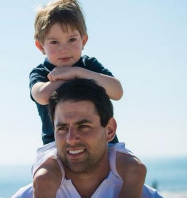15 years later — the legacy of an original fire. Featuring: Tim Commerford
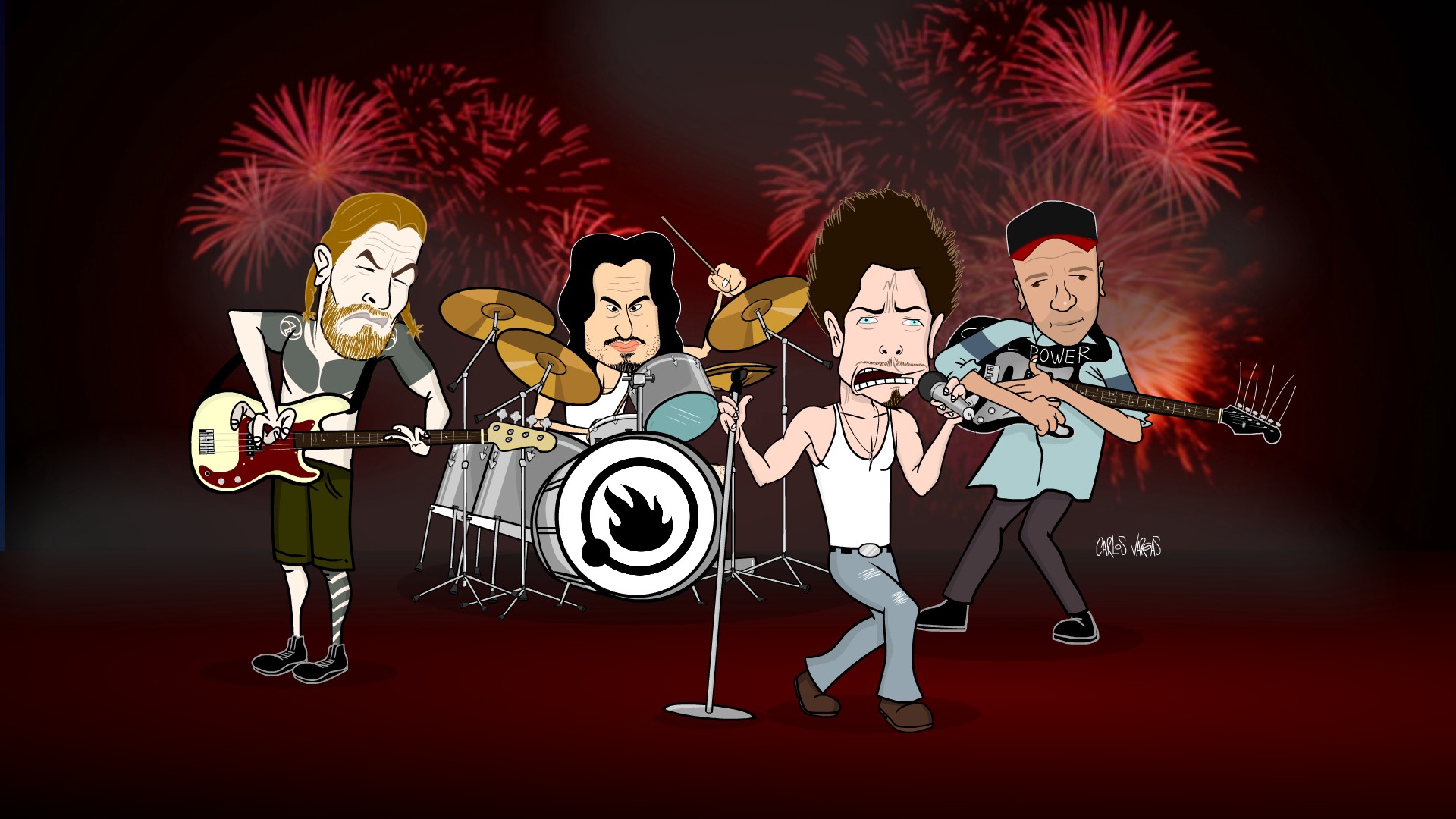
All sounds made by guitar, bass, drums and vocals.
~ the liner notes of every Audioslave album
November 19, 2002: Audioslave’s debut record is released
November 25, 2002: Audioslave performs live for the world to see — atop the Ed Sullivan Theater Marquee
15 years ago this week. History began…

Be Yourself:
“To be yourself is all that you can do.”
Audioslave. A powerhouse. What a perfect name for a group of four storied musicians that created an original fire using only the eight hands between them. Though their run was a short six years, it was an explosive and dynamic six years, holding very true to their name. As Rage Against the Machine split up with Zack de la Rocha leaving, guitarist Tom Morello, bassist Tim Commerford and drummer Brad Wilk, found themselves eager to continue. The clear path was to form a new band. As you can imagine the trio was inundated with requests, suggestions and trials from those a bit too similar to de la Rocha’s style.
About 1,100 miles up the west coast, Chris Cornell found himself in the aftermath of quite a successful and incredibly moving solo record, Euphoria Morning, as Soundgarden had disbanded in 1997. Much to the surprise of both parties, it was acclaimed producer Rick Rubin who suggested that Morello, Commerford and Wilk get together with Cornell. The timing seemed to be perfect. When asked about his initial thoughts to Rubin’s suggestion, Commerford with much enthusiasm responded, “I immediately thought about Badmotorfinger. It’s one of my favorite records. I spent so much time with that record, just loving it. I thought about ‘Slaves & Buldozers’ and ‘Jesus Christ Pose.’ These are songs that are anthems to me. It was so exciting.”
Commerford explained, they immediately started thinking about the endless possibilities of having Cornell’s voice blend with their music. “I think the first day Rick hit us up with Cornell, we were at his house and we all listened to ‘Slaves & Bulldozers’ and we discussed how Cornell could just do anything. Little did I know it was not really going to go in that direction. I see Audioslave as more classic rock, singer, chord progression type of music. Things like that, we never really did with Rage.” It seemed to be a natural pairing. Three robust musicians joining forces with an unmistakably potent voice that’s an instrument unto itself. All sounds made by guitar, bass, drums and vocals. Again — how fitting.
Arrangements were made for the group to get together in Los Angeles. Though sparks flew right away, the music served as a new challenge for each member. “I think back on it and I love Rage, I love the way it feels, and then Audioslave happens and it was so different. That’s the thing that I am most proud of. We didn’t just come back and make a bunch of riff rock and put Cornell’s vocal on it. We did something genuinely different.”
Commerford vividly recalls the first jam saying, “I remember being a little nervous. We had been playing with Zack for so many years and then here’s another guy. It was a little nerve-racking to be playing with another singer who I didn’t know. I had met Chris a couple of times, but I didn’t really know him at all. It was a bit uncomfortable at first, but we wrote ‘Light My Way’ during that first day and it ends up being on our first record. We left there that day thinking — We did it. This is cool. We wrote a song and it sounds good. That was it. That little fire ignited the whole thing. I think that’s how the best music works. You’re uncomfortable until you write a song that you like and that inspires you to write more.”
After that first session, the group knew they would be something special. As easy as it all began, there was a period shortly after where things got somewhat complicated. A courageous Commerford was determined to make Audioslave happen. “We got together and wrote songs quickly. Then we had some turmoil regarding management. We had a different management company than Chris and that caused a few problems. The next thing you know, it felt like things were falling apart before it even began. We had written a record, but for a second it didn’t feel good. Chris kind of went MIA. At that time he was Seattle Chris Cornell and he went Seattle on us. I personally went to Seattle. I searched for him and I found him. By finding him, I found myself in jail. Not because he was there, but because I ended up in there. That trip to jail cost me a ton of money. I look back on that and think that was money well spent because that was a big part of why Audioslave actually became a band. It was worth every penny. I found Chris and I dragged him out of Seattle and we became a band that made a lot of records in a short period of time.”
Three distinguished records were released over the course of four years. Writing songs was somewhat of a seamless process explains Commerford, “All four of us would get in a room and just start crafting something, whether it came from a vocal part of a chord progression. Sometimes it was something Chris would have or a riff one of us played or a drum beat. There would be some sort of inspiration where we would all think it was cool and worth continuing. Chris would be thinking of lyrics and melodies and would often hum a melody over a riff. We’d built the song with all four of us there. Once it was built and we knew what the structure was, Chris would go back and figure out the lyrics.”
The band toured extensively, making their world debut atop the marquee of the Ed Sullivan Theater in New York City, for The Late Show with David Letterman. It was the first time a band would perform on the marquee. (We’ll get to another “first” shortly.)

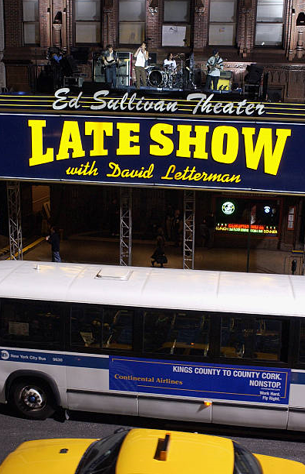
Audioslave’s collection of music offered straight-ahead, smack you in the mouth rock, but with a sensitive side. It’s some of Cornell’s most direct and inspiring lyrics. The songs showed more of personal, story-telling Cornell, touching upon life experiences everyone could relate to. Cornell took you on his personal journey with him. Songs like “Doesn’t Remind Me,” from their middle record, Out of Exile, give you that — lace up your boots, grab your coat and let’s go take a walk and have a cleansing chat type of feel. “Audioslave is basic Rock n’ Roll. There were times that it felt pretty mainstream. But its music that I know, when I’m 80 years old, I’m going to turn on an Audioslave record and feel good about it,” says Commerford.
On May 6, 2005, Audioslave became the first American rock group to perform an open-air concert in Cuba, as they played a free show in Havana before an estimated 70,000 people at the La Tribuna Antiimperialista. This was during the embargo and required a special permission from President Bush and Fidel Castro. The band was only allowed to announce the concert one day before, given it would be considered an exemption. The purpose of the show followed suit with what Audioslave always exemplified — celebrating the power of music.
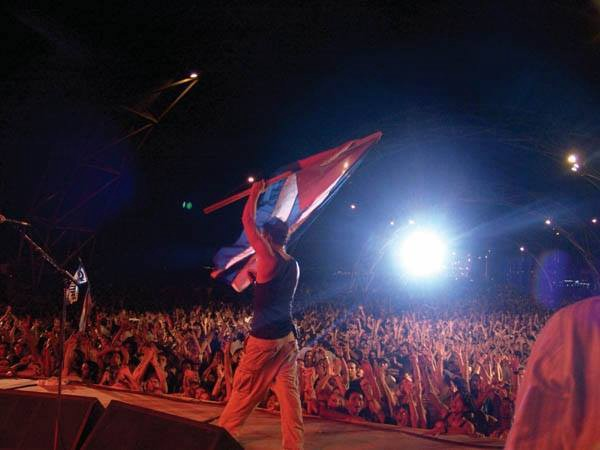
15 years later, Audioslave’s music is as prominent now as it was during its peak. Songs like “Like a Stone” (their biggest hit), “I am the Highway,” “Show Me How To Live” and “Be Yourself,” are in continual rotation amongst most rock platforms. Most importantly, they built something they truly appreciate. “To me, the legacy is being proud of what we did and what we didn’t do. We didn’t do what we do. We did something different for all of us. I’m so proud to listen to it and think — Wow, look at that. There’s a legit chord progression. I was playing bass and working off a vocal melody. Who would’ve thought I even had that in me? I certainly didn’t know that. I’ve never been in that situation. I had only been in a band where I play riffs and had a guy rapping on it. When somebody is singing, you have to be conscious of what they’re doing. As we made records, we became more in tune with thinking about that.”
Looking back, you get the sense Commerford really marvels at what Audioslave did in their time. He feels their third and final record only scratched the surface of what the band could have done next. “I look at that last Audioslave record and think it’s too bad we broke up when we did. Revelations to me was such an achievement. That was a great album. I hear some of those songs, and I don’t even remember the names of some of them, we never toured on it, we broke up right after we made it, and that is such a great record. It sounds great. Brendan O’Brian produced it. It’s amplified and it’s all there. You hear all the minor differences sonically, and I love that.
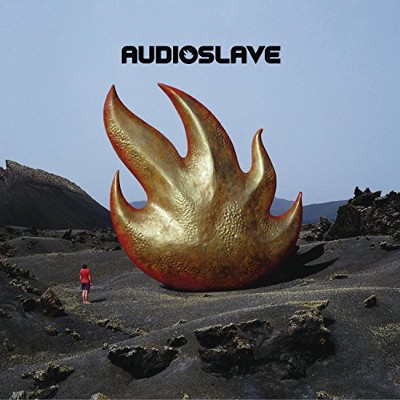


I Am The Highway:
“I put millions of miles under my heels and still too close to you I feel.”
For me, Audioslave was the first time I saw Chris Cornell live. March 3, 2003: at the old Avalon in Boston. I was in college; hungry, vulnerable, and I relied heavily on music to light my way. I was in awe of the Seattle music scene from the second I could conceptualize it. Cornell to me was the larger than life Seattle icon. He just seemed so full of grit and could craft lyrics that somehow touched upon every dusty corner in the room.
At the show, Cornell was last to walk down the old, narrow stairs that brought you onto the Avalon stage. Decked in a white tank top, cut blue shorts and army boots, I couldn’t believe after all this time, all these songs, here we were in the same room ready to share some music.
Although not a politically aimed band, Audioslave opened my eyes to the fact that music can be “your” voice. They represented speaking up, digging deep and being honest through music. As the band took their places on the Avalon stage, I vividly remember what happened next. Silence. There was no intro music, no striking a few chords or tapping a kick drum to test sound, it was a dark room with silence (aside from crowd roars, of course). Then, Morello takes two steps up, taps his pedal board and …burn that gasoline.
Of all the mesmerizing moments of that first show, there’s one that I’ve carried with me in a different compartment ever since. “I am the Highway.” After all this electricity, Cornell grabs an acoustic guitar, strikes the rhythmic A-minor, wave-rolling intro and glides right into a half solo version of this beautiful song. Eyes closed, head tilted down, pouring every ounce of himself into it. The Avalon was always dark inside, regardless of the lighting setup. It paired perfectly here. There are a few concert “moments” that I will forever have etched in my memory as a keepsake and reminder of how powerful live music is; Audioslave’s “I am the Highway” with Cornell gracefully kicking it off that night in 2003 is atop of the pile. How a musician can switch gears from so much energy to being bold enough to be so accessible with a ballad like this, threw chills up and down my spine. Oddly enough, that was the song that almost popped the microphone with intensity.
Exploder:
Like the name Audioslave — that so eloquently encapsulates the group’s music, the video for “Cochise” is one of the best introductions to a band of all time. It’s simple, completely honest and grabs every inch of emotion to what was taking place. Cornell stands alone atop a dark industrial building. Pacing. Eager. Down below, an army-looking pickup truck storms in with Morello, Commerford and Wilk sitting on the edge. They jump out, hit the elevator and Commerford takes an anxiety-laced deep breath (one of the best parts) as the elevator delivers them to an awaiting Cornell. Shot out of cannon, they arm themselves with instruments, take their positions and BOOM!
“Well I’ve been watching. Why you been coughing. I’ve been drinking life while you’ve been nauseous.” Hello world. Let us introduce ourselves via the song “Cochise.” Damn.

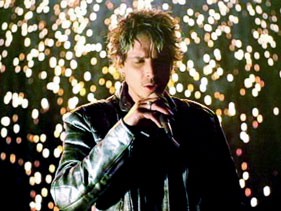
Out of Exile:
I had just started dating my now wife at the height of Audioslave. As we lived 400 miles apart for a good year, I would do as any 23-year-old reckless romantic would do — wrote to her by using song lyrics. The first I ever sent was Audioslave’s “Out of Exile.” “But the hours grew so empty and the ocean sent her waves. In the figure of a woman, she pulled me out to sea.” Four years later, on our wedding day, “Out of Exile” randomly came on the radio in the limo on the way to the ceremony. It is still the only time I ever heard that song on basic radio.
Yesterday to Tomorrow:
“And unlike the times before. From yesterday comes tomorrow. When life comes alive the past moves aside. No regrets and no remorse”
Audioslave made things happen. By blending the machine that is Morello, Wilk and Commerford with Cornell who injected some of his most inspiring lyrics, you were faced with an alluring wrecking ball of sound and feeling. One way or another, you were going to get moved. Their music encouraged you to jump on the swinging chains as opposed to being in the line of fire.
At live Audioslave shows, I saw people mosh, jump up and down, shed tears, lock arms, comfortably let down their red-dyed hair, embrace each other and hold one arm in the air with a gleaming first atop while the other arm is wrapped around the person next to them. I witnessed Shaun Morgan of Seether duet with Cornell on a unique acoustic rendition of “Fell on Black Days.” An experience he would later tell me fulfilled a lifelong dream. And finally, I saw four influential musicians come together for the right reasons — to create something new, challenge themselves and lead a rock-infused charge… their way.
The was last thing Commerford said to me as we wrapped up our Audioslave conversation (in April, 2016) was about Cornell.“I love that guy. I think Chris is an amazing musician. His voice is incredible. He understands his voice better than he ever has, not to mention how good of a guitar player he is. He’s just an incredible dude.” I didn’t necessarily take it as one day they will be back together, but the sincerity in his voice really emphasized that these guys genuinely cared for each other and are massively proud of their accomplishments. I hung up feeling, if ever we needed Audioslave as a society, somehow, they would be there.
And they were. On inauguration day on January 20, 2017. Performing “Cochise”, “Like a Stone” and “Show Me How To Live” as part of the Anti-Inaugural Ball, hosted by Prophets of Rage.
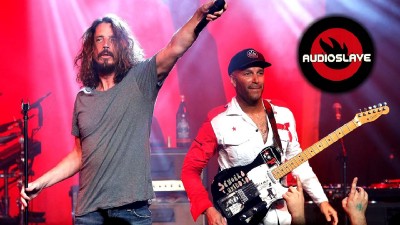
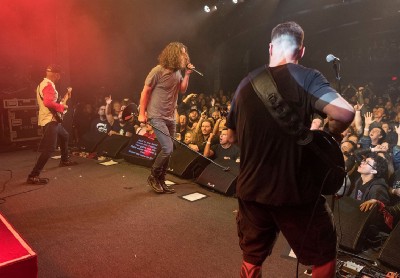

“Can’t explain it, it was something to see. Can’t contain something so ever real.” — Audioslave’s “Original Fire,” lyrics. Fascinating how a song initially written about the early 90’s Seattle movement can now be applied to the band that wrote it.
#KeepthePromise

Interview with Tim Commerford held in April 2016
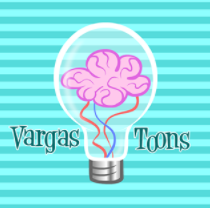
Featured art by: Carlos Vargas
– www.vargastoons.com
– carlos@vargastoons.com
– Skype: carlosvargas.online
-Twitter:@vargascarlos82
– FB: facebook.com/vargastoons
If you enjoyed, please recommend below and sign up for our newsletter
Follow Artist Waves on: Facebook, Twitter & Medium
~ follow Jeff Gorra | twitter @JeffGorra |JeffGorra@ArtistWaves.com
